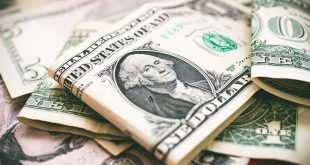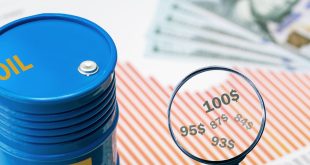Mohamed Hashad, Director of Research and Development at Noor Capital and member of the US Association of Technical Analysts, commented on global financial market developments, particularly expectations related to a US interest rate hike and whether the Federal Reserve has reached or about to reach the end of its monetary policy tightening cycle for this year, Hashad touched in a talk about how the US dollar moves based on the expectations traded by the markets, and the reasons behind the decline of the dollar index today to its lowest level in more than fourteen months at the beginning of today’s trading, and He believes that “the US dollar is significantly declining during the trading session on Thursday, when the index reached below the level of one hundred points.”
Hashad added: “For the first time in 14 months, specifically on April 22, the latest inflation data revealed that the producer price index fell to 0.1 year-on-year, meaning that despite the decline in inflation, it is still high, in addition to the slowdown in the Consumer Price Index announced on Wednesday, this came in a larger way than expected, which reinforces investors’ convictions that the Fed will raise interest rate during this year only once by 25 basis points, and that the monetary tightening cycle may end or is about to end prematurely.
Hashad continued: “From my personal point of view, I see that the markets have greatly overreacted and we cannot judge the performance of inflation by reading only one or two months, and the decline in inflation must be sustainable, and I think that the Fed will not cut interest rates until the official target of 2 percent is achieved, and also these expectations affected the US stock markets yesterday.”
Asked about reading the prevalent forecasts, and why stock markets celebrated the decline in the US dollar and the negative inflation data, Hashad replied: “Stock markets will benefit amid lower interest rates and this is good for stocks given that the environment of raising interest rates is unfavorable for stocks because it increases the cost of borrowing and thus affects the profitability of companies.”
Hashad pointed out that markets are waiting for the earnings season for the second quarter, in the coming weeks, and expectations indicate that US stocks or US companies may perform better than the previous quarter.
Asked about the inverse relationship between gold and the US dollar, and what expectations markets have for gold prices, Hashad replied: “Gold is at its highest level in a month and a half and we have seen levels of $1963 per tory ounce and it seems that it climbed on the shoulders of the US dollar and took advantage of the decline in the Dollar Index along with the decline in 10.9 US Treasury yields for 10.9, the lowest level in more than three months amid optimism in the markets as a result of the decline in the dollar,” adding: “I think gold may have more gains for an ounce of gold and this means that the next stop may reach the levels of $1980 an ounce and we may see $2000 per ounce.”
On oil prices yesterday, which began to recover to touch $ 80 per barrel for Brent crude, and the markets today see oil declining slightly, meaning that there are declines by about ten percent and twenty percent and for reasons behind the jumps in oil prices last period, Hashad explained that during the last period, oil was able to expand its gains to hover now around its highest level in a month and a half, and we saw a barrel of NYMEX crude at $ 77.30 per barrel and there are several factors It joined forces to push oil prices higher, most notably: the decline of the US dollar.
Hashad continued: “Oil traders quickly interpreted the decline in inflation into the fact that the US economy, which is one of the largest energy consumers in the world, may witness a slowdown, but a slight slowdown, not a deep slowdown, and the decline in the US dollar makes oil prices cheap and thus the quantities of purchases increase, and perhaps the most important factor is the rise in imports of China, the world’s largest energy consumer, by 11.7 during the past month, in a strong sign of the recovery of demand after the end of epidemic restrictions.
Hashad said that all these factors combined led to an improved risk appetite and led oil prices, so it is possible that simple profit-taking operations contribute to the price movement, but oil is still moving in a clear upward trend and targets may exceed $ 80 per barrel, meaning we will see rises in the coming days that may reach a level above $ 80 As long as oil maintains levels of $ 76, the levels of $ 100 are still far away, and there are very many data But oil reaching $100 is not entirely unlikely, he said, adding: “But we are trading what we see as the first target station that could be at $80 levels.”
On Britain, the better-than-expected contraction in the British economy rapidly, and how to read the latest data that is significantly reflected in the performance of the pound sterling against the US dollar above the level of 1.30, Hashad said that the main problem is the inflation dilemma for the British economy, adding: “From my personal point of view, there is no alternative to the continued rate hike by the Bank of England.”
 Noor Trends News, Technical Analysis, Educational Tools and Recommendations
Noor Trends News, Technical Analysis, Educational Tools and Recommendations




